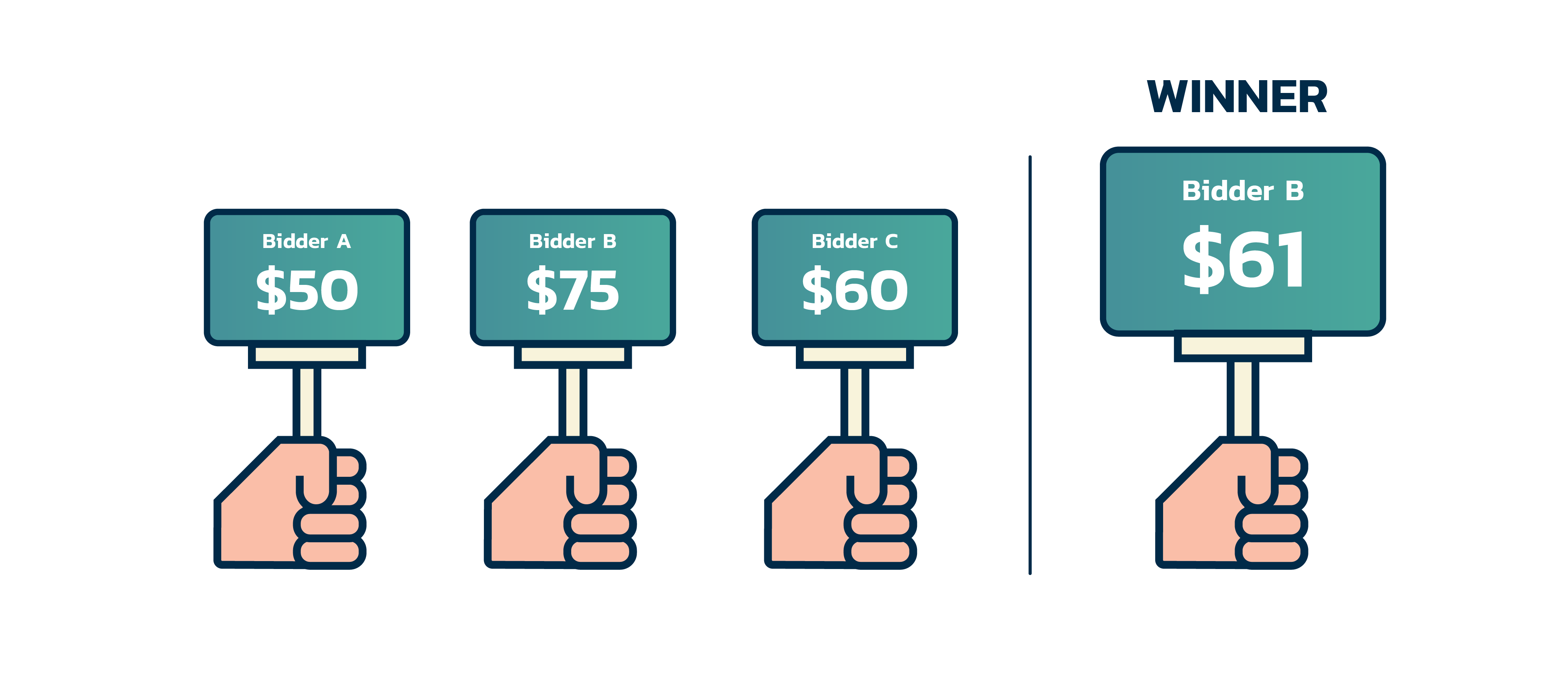Take a deeper look at the concept of second-price auctions, explain how they work compared to other types of auctions and highlight the benefits this model offers advertisers.
Auctions on Provi
There are millions of auctions going on behind the scenes on the Provi marketplace every day. They happen automatically every time a Sponsored Product ad is shown to a customer anywhere on the Provi marketplace. The auction helps to determine which product to advertise. The process looks like the following:
- Brands bid on the amount they would pay for a buyer to click on their Sponsored Product.
- The system factors in this bid and how relevant each product is to the buyer to arrange products on the page in different Sponsored Product placements.
- An ad is then served using a specific method for our auctions, known as second-price auctions.
What Does A second-Price Auction Mean?
While all auctions are similar in that someone is bidding to win something, not all auctions are the same. Second-price auctions are used to provide better value to our brand partners and offer a level of fairness that our brand partners value.
Example of second-Price Auction: An Antique Painting
To understand how second-price auctions work and the value they bring, let’s start with a common auction model — the highest bidder wins. People bid on an item, each representing the price they’d be willing to pay. Sometimes there are multiple rounds of bidding as people increase their bids, but eventually, the auction is called and the highest bidder pays the amount they bid for the item. But, in this auction model, the winner pays the bid price even if they could have won with a much lower amount.
Say we’re bidding on an antique painting. Person A bids $50, Person B bids $60, and then, worried about a bidding war starting, Person A bids $100. No more bids come in and Person A wins, handing over $100 for the painting. Is the painting really worth $100? Maybe $75 was Person B’s maximum bid, and Person A could’ve won the painting for $76. To not risk losing the bid, Person A bid too high and overpaid for the painting.
This doesn’t happen with second-price auctions.
With a second-price auction, the bidders set their maximum bids and only pay what they need to in order to win, based on the other bids. So in that same example, bidding on the painting, if Person A sets their maximum bid at $100 and Person B sets theirs at $75, Person A will still win, but end up paying a little over $75, just enough to win, rather than the full $100.

More on Auctions
On Provi, suppliers will determine a maximum cost-per-click (CPC) bid which represents the amount they’re willing to pay for a click. If a customer clicks on the ad, the amount they end up paying per click is essentially the ‘market rate’ for the click — and not necessarily the bid amount.
What the supplier ends up paying, and where the ad is placed in the marketplace, takes into account factors like how relevant the product is to the buyer — ads for red wine are more relevant than ads for white wine to a buyer who searched for ‘red wine ’ — and the likelihood a buyer will click on the ad if it is exposed.
If a supplier is new to CPC and paid search advertising, the term ‘auction’ might assume that the highest bid would ‘win’ the auction and their products would be seen first. But that’s not necessarily true — the likelihood of a buyer clicking on an ad is an essential determinant of where the ad is placed. This is why it is so important for new, challenger brands with low awareness to play for the highest spots.
The important thing to remember about a second-price auction model is that a supplier could end up paying less than the maximum CPC bid, but will never pay more.


Comments